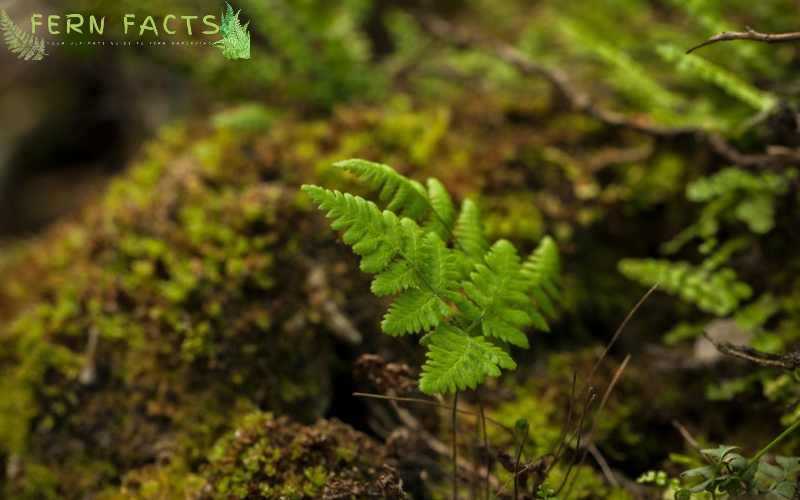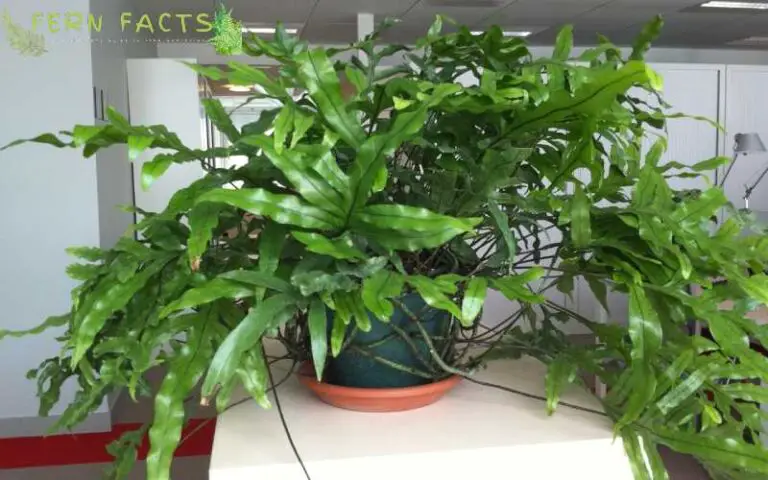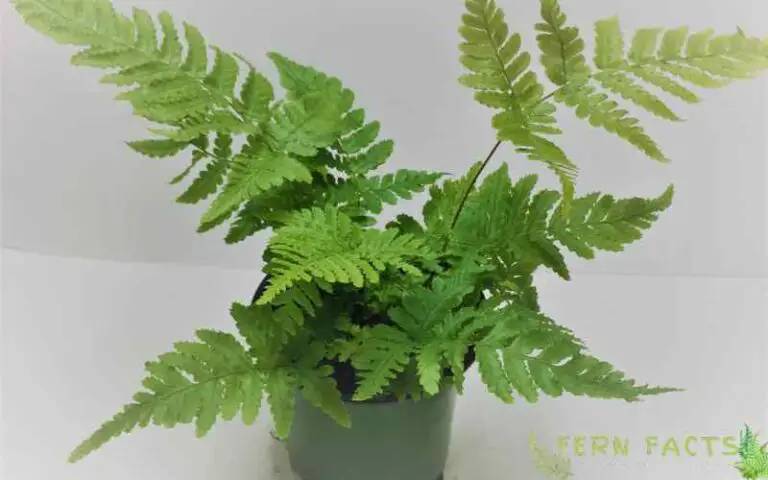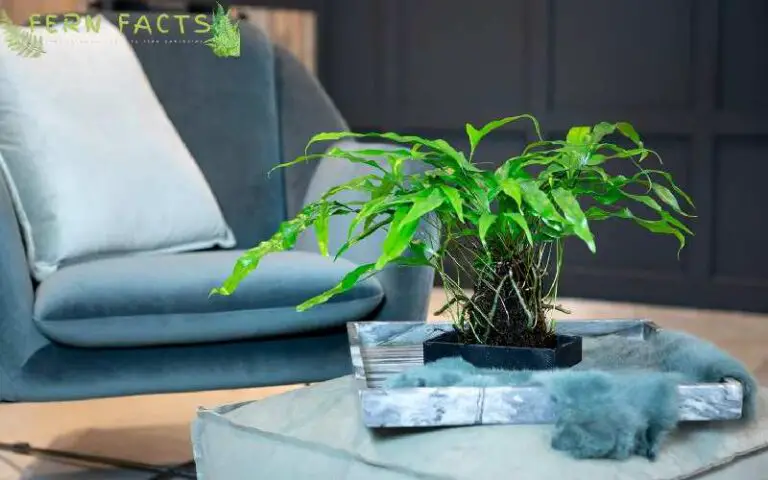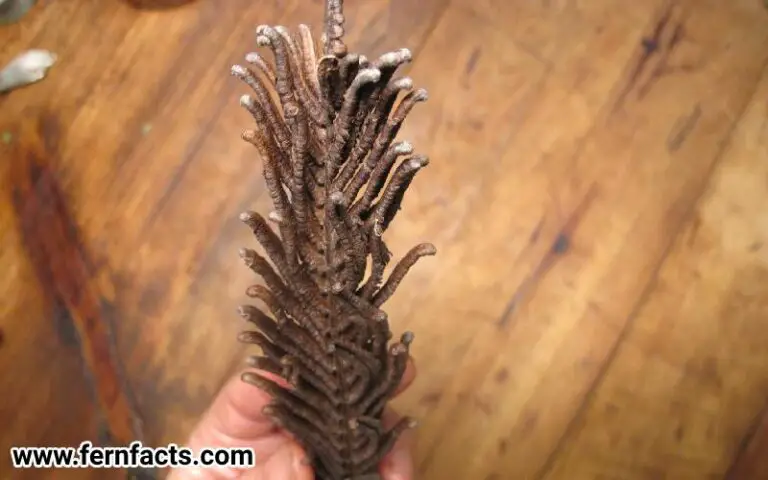What is a Marsh Fern: Marsh Fern Info and Care
Do you know what a Marsh fern is? If you want to grow these beautiful deciduous plants in your house, you have to understand their characteristics. So read this article thoroughly.
In this article, I’ll be discussing what Marsh fern is and will talk about its further growing and caring tips to you. So stay tuned to this article for more information.
Overview of Marsh Fern
- Botanical name: Thelypteris palustris
- Common name: Marsh Fern, Eastern Marsh fern
- Family: Thelypteridaceae
- Plants: Semi-evergreen or deciduous
- Native range: North America, Eurasia
- Native habitats: Woodlands, swamps, wet fields, streambanks
- Shade requirements: full sun or partial sun
- Height: around 1 to 2.3 feet long
- Soil pH: acidic, neutral, moist, and well-drained
- Soil type: loam, sandy, clay, alkaline
- Hardiness: 2,3,4,5,6,7,8
- Resistance: Deer-resistant
Marsh ferns are deciduous ferns which have two sets of fronds. One side of the fronds is fertile, which is mostly the smaller ones.
On the other hand, infertile fronds are a little bigger than the fertile ones. The fronds of these ferns usually tend to grow around 6 inches long and 3 to 6 inches wide. Usually, the smaller fronds have sporangia which is called sori.
They have a minimum of 10 to 40 pairs of pinnately lobed leaflets.
These Marsh ferns are widely distributed in Eastern North America and Eurasia. In their native regions, they prefer bogs, woodlands, streambanks, wetlands, and fresh tidal places to grow and thrive.
Since they are deciduous plants, they remain evergreen for a limited period of seasons. They lose their fronds during winter and again get them back in spring.
Marsh Ferns Growing Requirements
If you want to grow best and thrive in this Marsh fern, then follow the given instructions below there:
Light Conditions
Marsh ferns prefer full sun to partial sun conditions for thriving. Unlike many shade-loving ferns, they have a tolerance for full sun exposure.
So you can plant them under full sun exposure in your garden. Or you can also give them indirect dappled shade in your house.
They can tolerate both lighting conditions as long as their soil is well-hydrated. Note that, they don’t tolerate low light conditions or darker conditions. So try to keep them in bright sunny places in order to let your plant thrive.
Watering
Marsh ferns enjoy damp soil not waterlogged situations. So try to keep the soil moist and damp. Don’t overwater because they cannot tolerate standing water.
Although they thrive in wet conditions just like their native habitats, excessive water can kill your plant. Hereby, keep the soil’s condition damper not overly soaked. You can give them water once a week during the spring season.
And in winter seasons, you can reduce watering. You can simply water them once in 15 days during winter seasons. Or you can use a thumb trick to water your plant. This will guide you to accurate watering assumptions for your plants.
Soil Requirements
These Marsh ferns prefer acidic neutral soil to thrive. Besides, the soil should be loamy and sandy. Conversely, they can tolerate clay soil and Alkaline soil as long their soil is wet and hydrated.
Similarly, try to make the soil well drained so that extra water can drain out. Rich humus soil has the ability to absorb excessive water from the soil. You can enrich the soil’s condition by mixing organic matter in it.
Temperature and Humidity
Similarly, Marsh ferns prefer 32 to 95°F for thriving. However, they can tolerate up to -20°C. If the temperature goes below -20°C, then it will be very difficult for them to survive.
In addition, they also prefer humid conditions as they enjoy a humid atmosphere. They cannot tolerate very hot or boiling climates. Rather they prefer cooler temperatures.
Therefore, if you live under very hot temperatures, then you need to give them extra humid conditions for themselves to survive. You can mist the plant or use a humidifier to increase the fogginess and moistness around them.
Fertilizer
These ferns need fertilizer once a year. So try to feed or repot these ferns with new mixing soil. This would be fine for your Marsh ferns.
They don’t need that much fertilization because the source of their nutrition is from sunlight. Just re-pot your ferns once a year, when they become twice their previous size.
Just make rich soil compost for repotting. If the soil’s condition is poor, then they might require some extra nutrients. Then you give them all-purpose fertilizer at half strength before the spring season. Since spring is their growing season, it will enhance their growth.
Marsh Ferns Care and Maintenance
Like many other ferns, Marsh ferns don’t require much attention and care. They are very low-maintenance ferns.
However, you can still cut off their unshaped, damaged, or sunburned ferns to keep them clean and refreshed. Additionally, they are also pest and disease-free plants. Do you don’t have worry about
How to Repot Marsh Ferns
Repotting is necessary to reduce the fern root-bound situation. For Marsh ferns, repotting is also essential because it is a kind of fertilization process for them as well. Thus, this will enhance their growth.
- For repotting, choose a pot with a bigger container or pot. (at least 2 inches bigger)
- Then take your plants and loosen the soil. Dust of the soil from the side.
- Gently remove the plant from the pot.
- Don’t take out the soil from the roots. It might destroy their roots
- Later, prepare well-drained acidic loamy soil. You can mix organic compost, peat moss, perlite, and vermiculite in the soil.
- fill the pot in half with your new mixer soil.
- Put your fern in the pot and fill the remaining space with soil.
- Then water the plants so that they can get instant hydration.
- Repeat the process every 2 to 3 years to accommodate its size and shape.
How to Propagate Soft Shield Ferns?
Well, Marsh ferns can be propagated in two ways. Here are those ways:
Root Division Process
One of the ways to propagate Marsh ferns is by division method. You can do this process in the spring season.
- For this propagation, just take your chosen mature plants that you tend to divide.
- Gently, remove your marsh fern’s plant from the pot.
- Split the roots of the main plants into half with any trowel. Certify each part has an equal amount of roots.
- Mix the new fresh soil with organic compost, perlite, vermiculite, leaf mold, and peat moss.
- And, replant each section into a pot or container or in your garden land.
- Finished the process by watering the plants properly.
Spores Collection Method
This method is quite a complicated process to do for any beginner. Only a professional hand can do this process successfully. However, if you still want to do this process, then follow the given steps below:
- Choose mature plants that have new spores underneath the fronds.
- collect the spores in white paper or any white cloth.
- After that, prepare the soil with rich fertilizer, and organic compost.
- Later the spores on the soil which have been collected from the fronds.
- Water the soil thoroughly or mist the soil surface. Try to Maintain the soil’s hydration level.
- After a couple of weeks, you will notice a green structure coming through from the soil surface.
- Later on, replant your baby plants into a different pot by following the repotting guidelines above.
Recap
In short, Marsh ferns are deciduous plants that love wet and damp soil conditions. As long as their soil is moist enough they can enjoy full sun exposure also.
Similarly, they don’t require much attention to grow as they are pretty low-maintenance ferns. By the given instructions and guidelines, you can easily grow this plant in your house.

